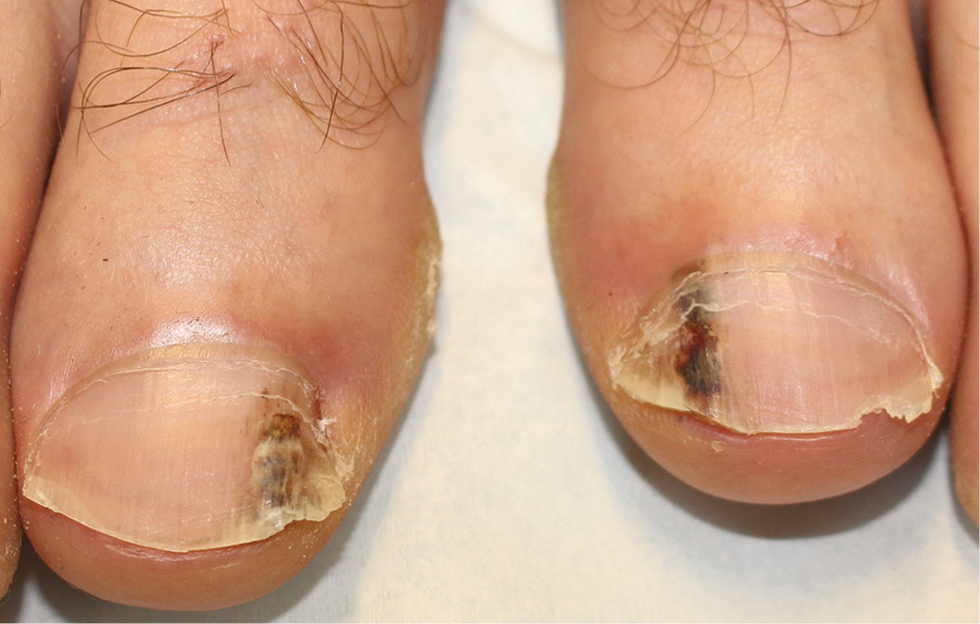Translate this page into:
Bilateral tennis toe
Corresponding author: Dr. Shari R. Lipner, Department of Dermatology, Weill Cornell Medicine, New York, USA. shl9032@med.cornell.edu
-
Received: ,
Accepted: ,
How to cite this article: Falotico JM, Magro CM, Lipner SR. Bilateral tennis toe. Indian J Dermatol Venereol Leprol 2023;89:903.
Longitudinal melanonychia has a broad differential diagnosis including melanoma. Subungual haematomas rarely present as dark bands resembling longitudinal melanonychia. A 35-year-old Caucasian tennis player presented with a decade-long history of black bands involving bilateral great toenails [Figure 1]. Dermoscopy showed homogeneous areas and globules without melanin lines [Figure 2]. Nail plate clippings with histopathology showed entrapped blood without hyphae or melanin. Stopping short while playing tennis may force the toes into the narrow part of the sneaker, rupturing subungual blood vessels. Tennis toe is most common in the great toenail in patients ≥35 years old. The patient’s avid tennis history likely resulted in subungual haematomas from trauma.

- Longitudinal black bands on bilateral great toenails

- Homogenous areas, peripheral fading, globules, and streaks seen without lines of melanin (contact and non-polarized dermoscopy, magnification: 10×)
Declaration of patient consent
Patient’s consent not required as patient’s identity is not disclosed or compromised.
Financial support and sponsorship
Nil.
Conflict of interest
Ms. Falotico and Dr. Magro have no conflicts of interests. Dr. Lipner has served as a consultant for Ortho Dermatologics, Hoth Therapeutics and BelleTorus Corporation.





